Back in 2013, John “DJ” DesJardin talked to us about his visual effects work on Man of Steel. He went on to work on Batman v Superman: Dawn of Justice and Justice League. He’s back today to talk about the challenges of bringing director Zack Snyder’s vision to life on Zack Snyder’s Justice League.
How was this new collaboration with Director Zack Snyder?
It was actually the continuation of my last collaboration with Zack. We resurrected a lot of VFX work, concepts and themes from our original collaboration on his version of Justice League back in 2016/early 2017.
What was your feeling to be able to finish his vision?
Very emotional. There is a lot of tragic history that led to Zack’s vision being killed. It’s been very cathartic for me personally to help Zack and Debbie Snyder complete this work. Like every other time I’ve worked with them, I was hugely enthusiastic to visualize the story they wanted to tell. And I was heartbroken when our work was cut short. So it’s been satisfying to finally set the cinematic world right again with the realization of Zack’s vision.
This kind of situation is really unique. How did you approach it with your VFX Producer?
Tamara Kent and I approached it as we would any project, laying out a schedule and budget we thought would work. The parameters were a little different, in that there was a certain percentage of the VFX work that had been completed back in early 2017, before that work was thrown out.
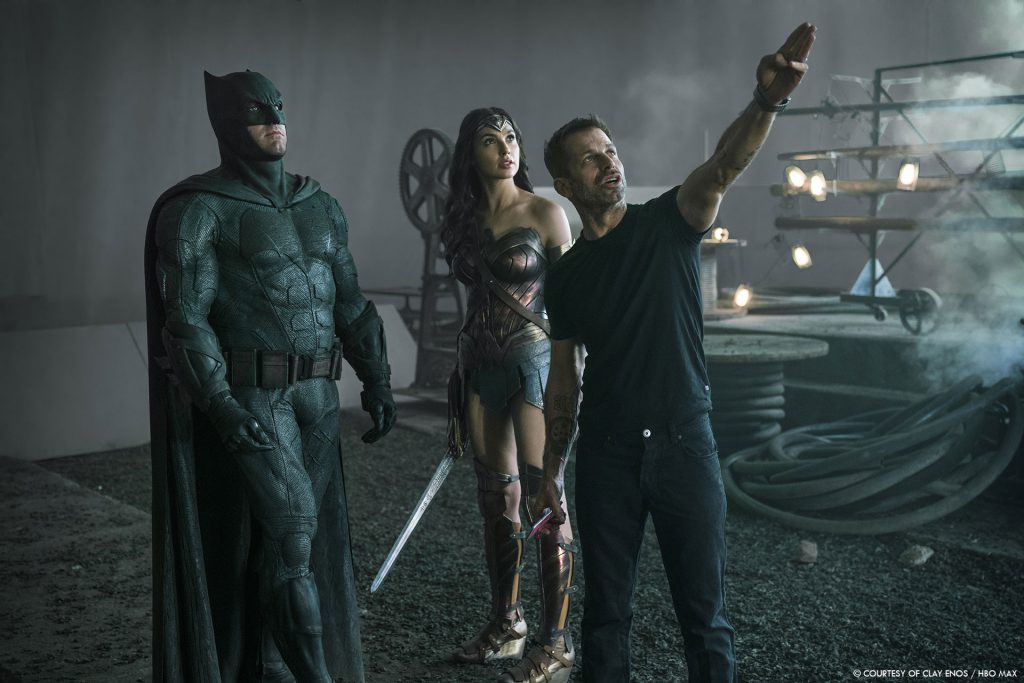
The schedule was short and the amount of work really big. How did you manage it?
The schedule was the first hurdle. Tamara Kent and I budgeted for a schedule that included a 52 week post. We knew that even though there was no photography needed (at the time), the forensics and de-archiving of old shots, old elements and old designs meant we needed the time to really get it going. But the studio demanded it much earlier than that. They gave us half the time to meet their desire to release it in March 2021. So it was a scramble from the start to go through the entire old cut of the film and discover the status of each shot, hoping we’d retain a lot of finals in the process to help offset the large amount of original reimagined work and brand new work in scenes that were deleted and never worked on.
It must be interesting to be able to look back on your work and improve it. Did you do things differently?
Yes. Mainly in terms of going back to original design elements, like the old version of Steppenwolf that was deemed “too scary” by the powers that be at the time. We had to replace the theatrical Steppenwolf with this version which meant a lot of shots went from “Final” to “Un-Final”. The look of the abandoned Russian nuclear facility was completely changed to the old Zack Snyder/Patrick Tatopoulos concept which was a more menacing cloudy day/midnight cloudy-moonlit-night look. More dramatic. We needed to put back scenes with Darkseid in Apokolips along with conversations between Steppenwolf and Desaad in Step’s lair. Lots more character animation work. And then there’s the whole original structure of the 3rd Act fight. So, lots of old stuff had to be restored but with the high level of detail Zack always (rightfully) demands of us.
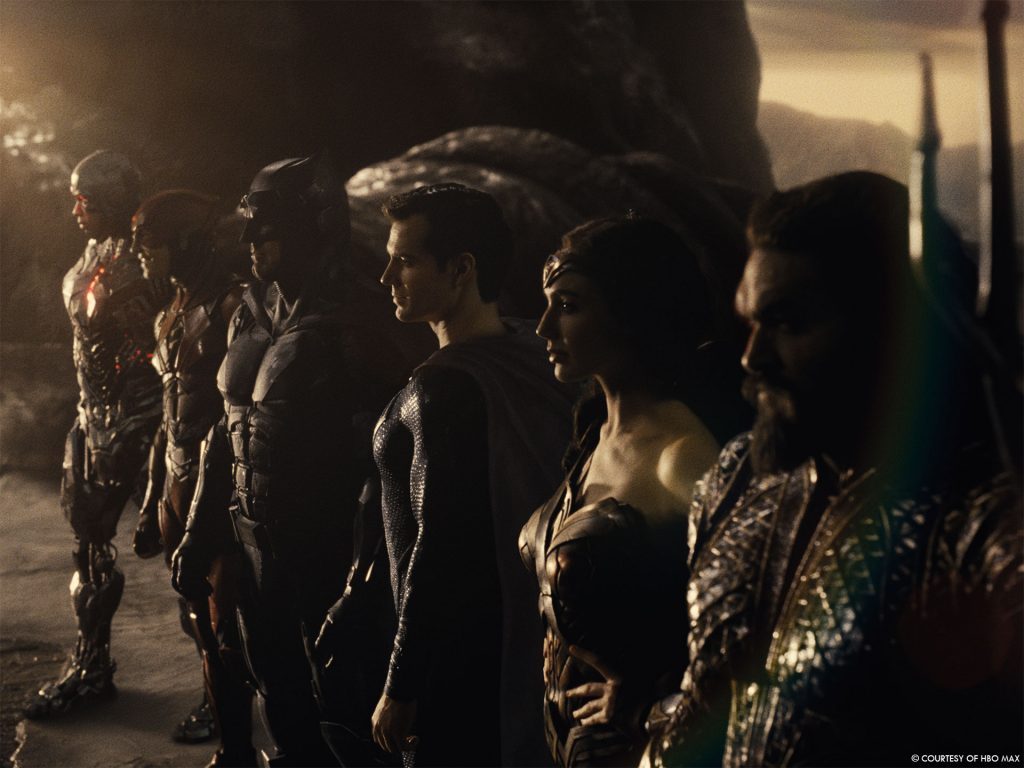
How does the 1.33 aspect affects your work?
It affected it a LOT. Because Zack always wanted that to be his final aspect ratio. But during our forensics exploration we discovered that there was an early compromise to 1.42 and then later all the way down to 1.85, which was the final aspect ratio of the theatrical version. So almost nothing was finaled at the desired aspect ratio. But we discovered that some shots had earlier versions at the correct aspect ratio before cutting it to 1.85, or a lot — Weta finals being a good example — that were 1.42 and could easily be made to be 1.33 with a little file stretching or artistic cropping so we didn’t have to re-render and composite every shot to fit the 1.33. And then, of course, there were a lot of shots that did need to be regenerated, either by using available cached and archived data or by actually re-rendering from scratch. That was a last resort, as we were trying not to redo old work that was close to final. We were trying to reserve the most work for the stuff that was farthest from being done first time around. But there were a lot of overlapping types, which is what made this easily the most difficult film we’ve collectively ever done.
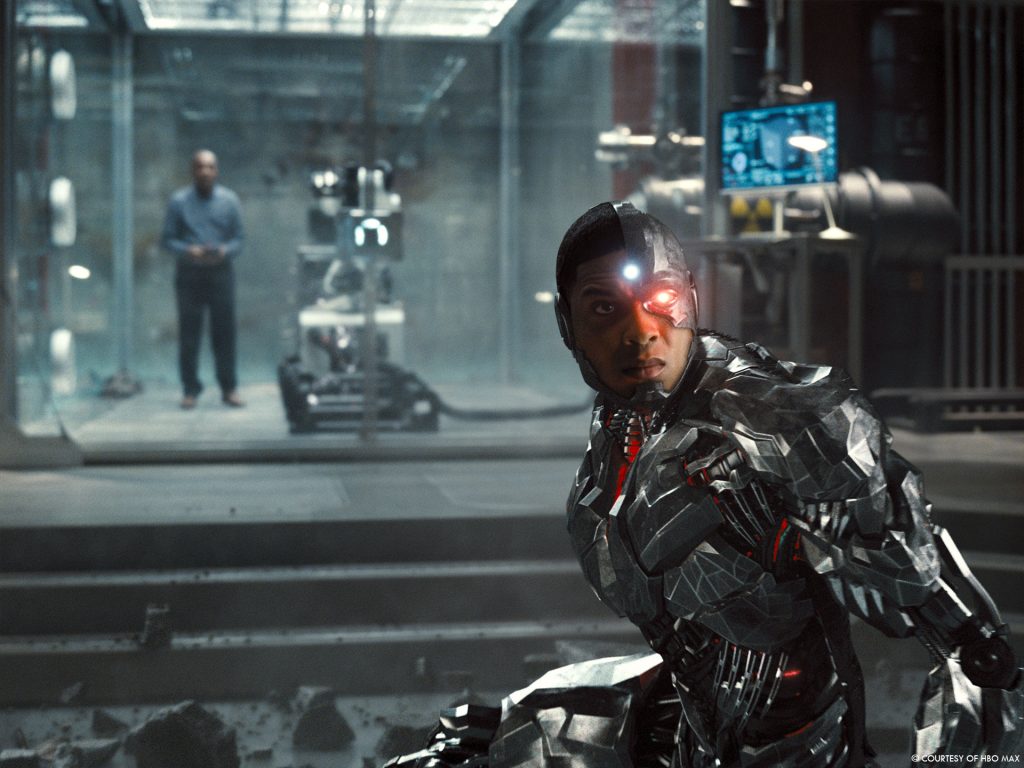
How did you split the new work amongst the original vendors and the new ones?
The original big set pieces were handled by Weta, Scanline VFX, DNEG and MPC. We had just wrapped work on Godzilla Vs Kong with Weta and Scanline so as we wound down on that show, those teams started de-archiving as much as they could from their original run on JL. MPC worked on JL, but unfortunately nearly all of their work ended up being for the divergent design and story of the theatrical version, which is quite different from Zack’s original version.
So Tamara and I made the decision to split the work in Pozharnov between Weta and Scanline: Weta would handle all of the interior cooling tower Steppenwolf/Desaad/Darkseid heavy conversational acting scenes and Scanline would handle all of the exterior establishing and heavy 3rd Act action scenes. Bryan Hirota came up with an interesting idea to push the midnight moonlit look (replacing the theatrical “red world” look) into high-iso territory which ended up being a cool way to show off more detail than before. Both facilities handled major 3rd Act fighting.
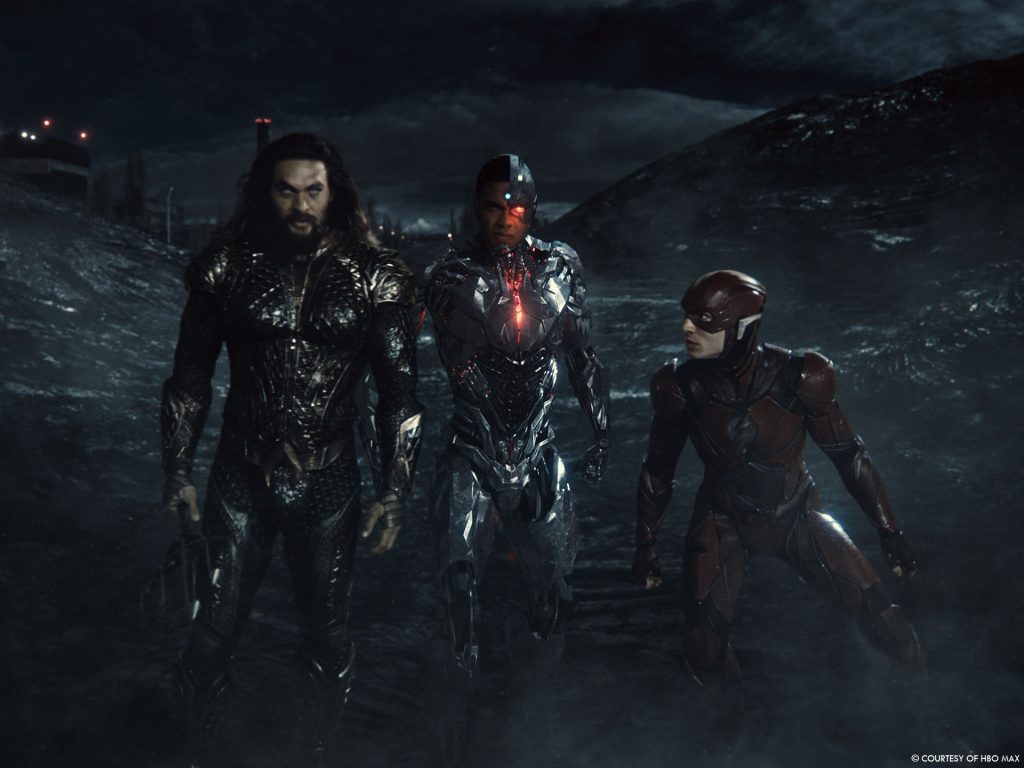
Where you able to work with the same VFX Supervisors as the 2017 version?
Almost. Bryan Hirota was back to complete his work at Scanline (I had also just wrapped Godzilla Vs Kong with them). Tom Proctor at DNEG was on again for a while, but then a project he’d started beforehand needed his full attention. (Alexander Seaman stepped in but then needed to leave — for personal reasons — and was replaced by Mike Stillwell who supervised DNEG’s work through to Final.) Keith Miller was our original supervisor at Weta years ago, but he was deep into other work. We had just completed Godzilla Vs Kong with Kevin Smith at Weta, so we collectively jumped into Justice League together. Kevin brought in Anders Langlands to help supervise plus Simeon Duncombe (animation supervisor), both of whom had worked on the previous version of Zack’s JL.
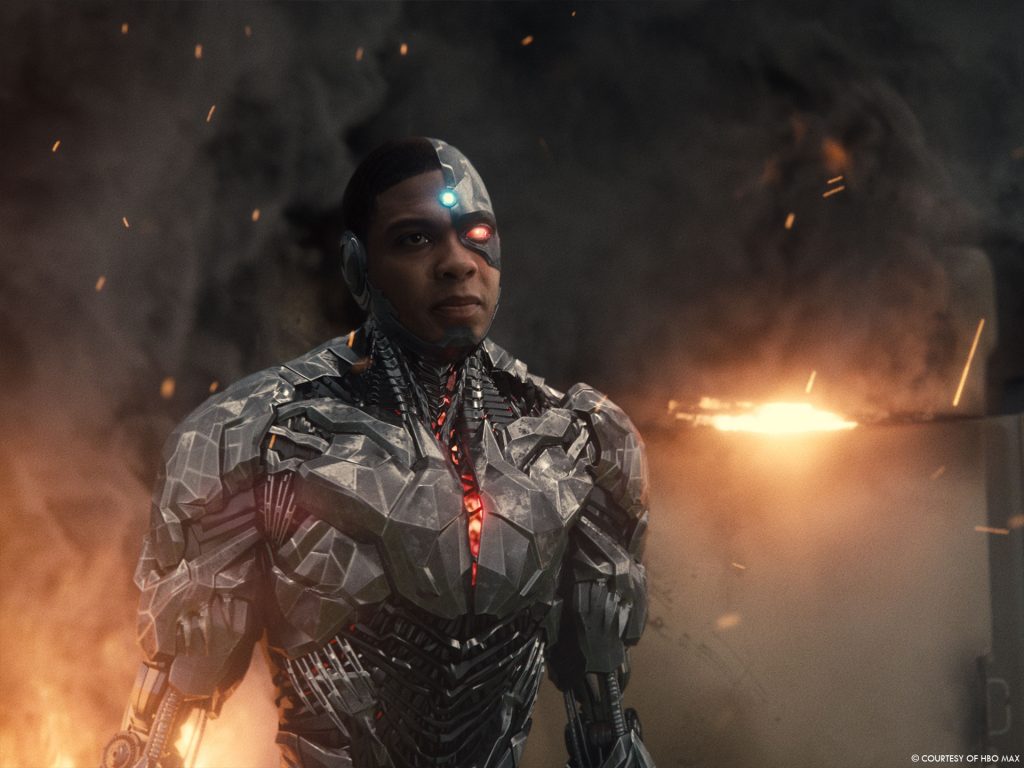
How did you work with them for the restore and unarchive of their assets and shots?
We tried to do a parallel de-archive and resurrection of old shots and assets. From our production side, we did a lot of digging through the original 2017 backup at WB. To be honest, it was not very thorough. We ended up relying heavily on the teams’ local project archives to put the project together. Even MPC chipped in and handed over fundamental geo that provided the basis for the Russia location re-build. But this is the essence of the difficulty of the show, the degree at which each shot was put away between 2016-2017 was unique making each shot difficult to trace forensically.
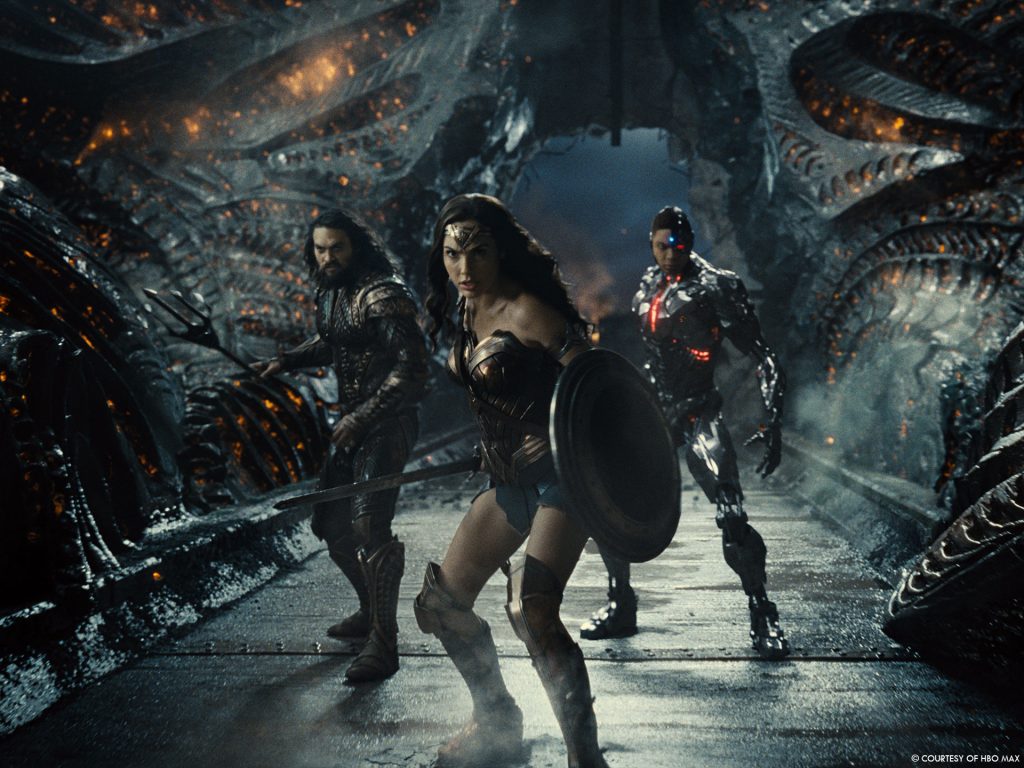
Can you elaborates about the new look of Steppenwolf and also about Darkseid?
The “new look” of Steppenwolf is really the original Patrick Tatopoulos design Zack approved back in 2016 before we originally shot the movie in London. The creative execs at the time deemed him “too scary”, so they whittled away at the alien design until we ended up with the approved theatrical “Army Surplus Viking” look. Darkseid and Desaad were nearly final assets when they were taken out I guess as an attempt to simplify the story. Weta resurrected and completed the original Steppenwolf (complete with his adaptive armor), Darkseid (both the Uxas “young Darkseid” version in the History Lesson and the modern Apokoliptian version) and Desaad. And then we added Granny Goodness to the Apokolips Pantheon.
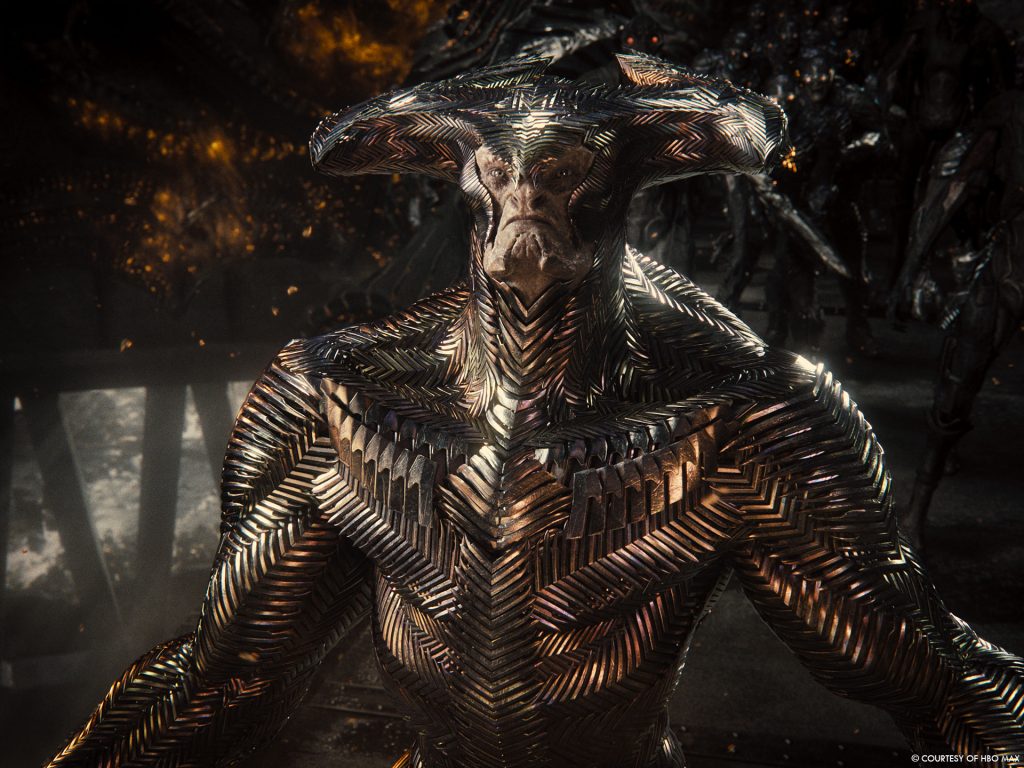
Since 2017, technology has changed. Did you used new techniques for these CG characters and especially for the performance capture?
We had a very established mo-cap/facial capture pipeline set up for the original version of the film. The performances were captured right after initial photography. This time around, I believe we only had the original picture-in-picture video as visual reference for the all-CG characters. Zack fine tuned some of the lines in the conversations which were cut from the 2017 version and never completed. We relied heavily on the animation teams at Weta and Scanline to nail these character performances without the benefit of a new production pipeline to help get them there.
What kind of references did you receive for The Flash slow-motion shots especially the new sequence in the final battle?
There’s a lot of new work involving Flash, some of which was completed before Zack left in 2017. Flash was always a complex character featuring many different combinations of frame rates to show how he’s unstuck in time. All of that work culminated in his final character arc at the end, when he pulls back 6 seconds of time to arrive at the exact moment he needs to be in to transfer his charge to Cyborg and break the Mother Boxes apart. Zack had a very trippy idea for this scene visually which we postvised extensively with MPC but never were allowed to get much into the realm of actual render tests for the final look. Bryan Hirota and I discussed the scene with Zack, detailing how we wanted to build the Flash frame rates and contrast him with the destroyed universe — The Abyss — and subsequent Cosmic Rebirth. Scanline took that old edited postvis and expounded on our basic ideas to push the Big Bang Trippiness Factor to the psychedelic conclusion you see in the film. Weta took the reins as Flash enters the rebuilding cooling tower, taking us all the way to Flash contacting Cyborg in hyper speed, ending inside Cyborg’s virtual world.
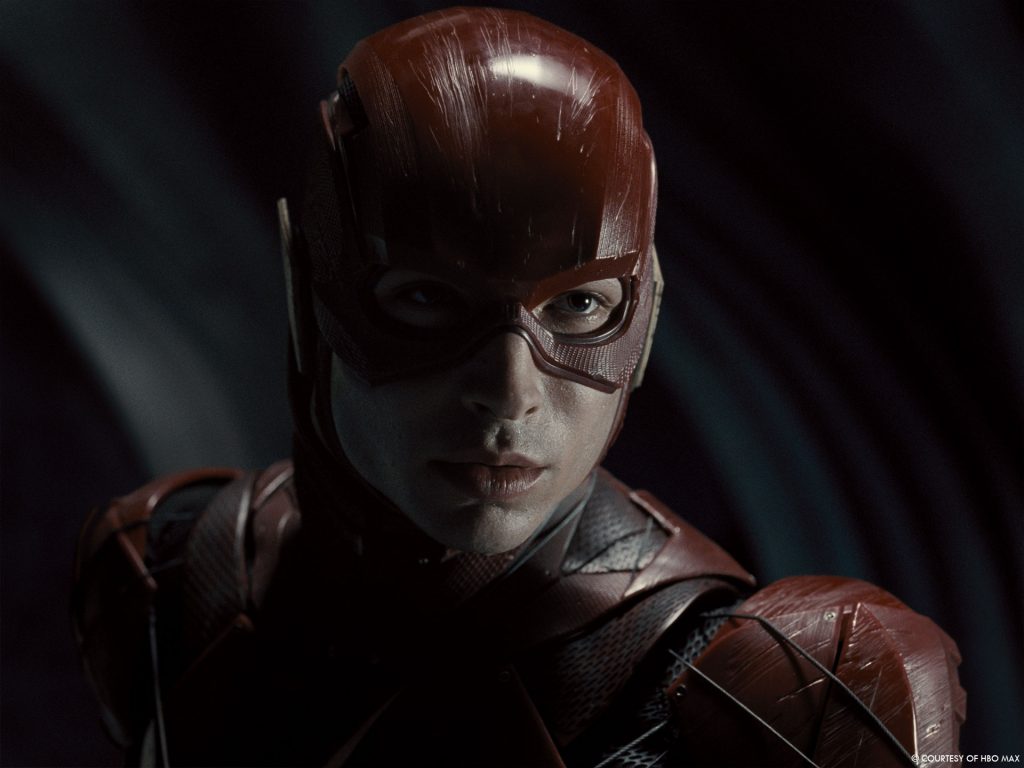
Which new sequences was the most complicate to create and why?
There weren’t any trivial scenes in this movie. Even scenes which partially still existed needed a lot of extra work or in some cases details had changed so much that we had to track for a new (old) continuity. There were also assets that had to be resurrected. All of which is to say, each old/new scene was complicated for various reasons I’ve already stated. Nothing was easy!
What is your favorite shot or sequence?
There’s not any one shot or sequence that is my favorite. I tend to have favorite moments within the sequences. I love this original beginning of the film — Superman’s death at the hands of Doomsday — and the way it reveals these locations you’ve never seen before, setting the stage for the rest of the film. I love Steppenwolf grabbing the reins of the horses and throwing the horses and riders during the Themyscira Battle. I love that Darkseid is the focus of the history lesson. Actually, I just love that the threat of Darkseid and Apokolips hangs over the film as a whole. I’m very happy we got the chance to put those characters back into the story. It’s so much richer for it.
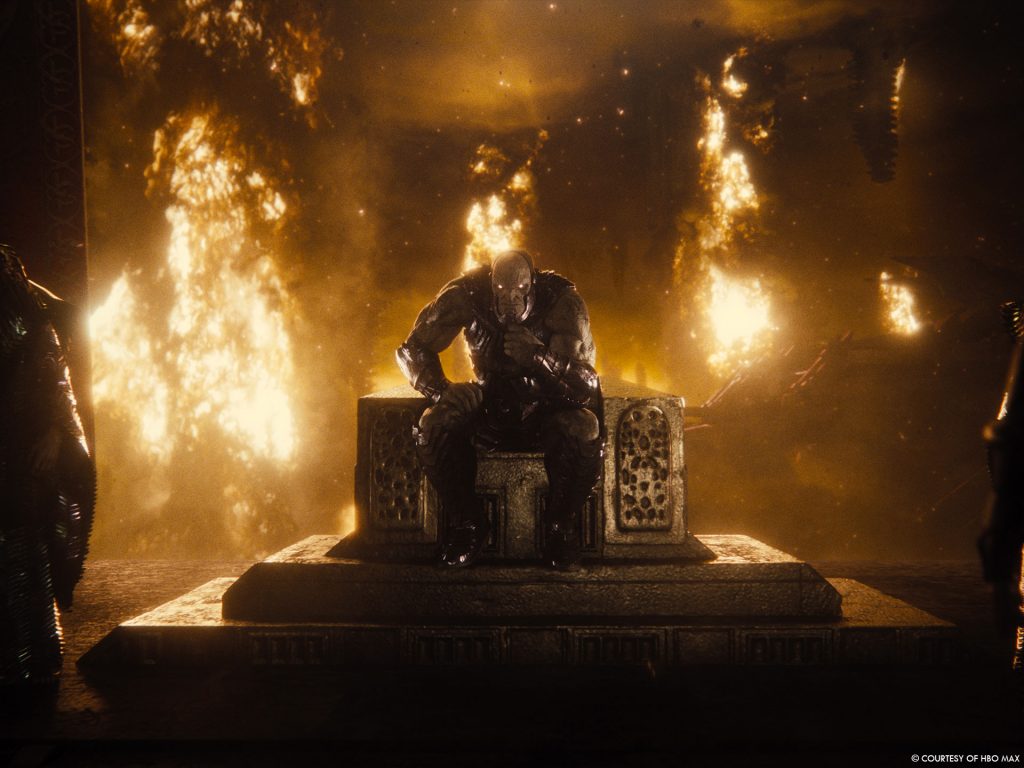
How long have you worked on this show?
One could say I’ve worked on it, off and on, for about 5 years…!
What’s the VFX shots count?
Tamara tells me we completed around 2700 shots in about 7 months.
What was the size of your team?
My VFX team including VFX editorial was about a dozen people.
What is your next project?
I am currently in London prepping to shoot The Flash.
A big thanks for your time.
WANT TO KNOW MORE?
HBO Max: You can watch Zack Snyder’s Justice League on HBO Max now.
© Vincent Frei – The Art of VFX – 2021





Brilliant work!
It’s also nice to hear that he will be working on the Flash film.